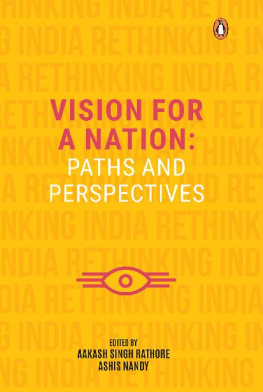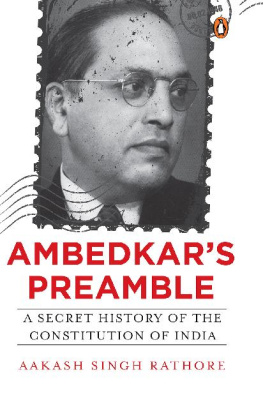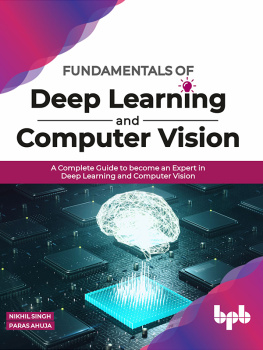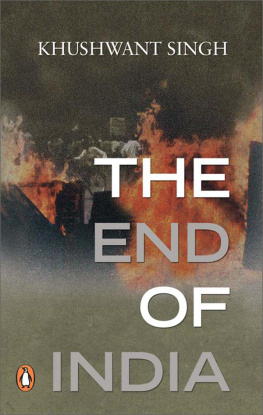EDITED BY
AAKASH SINGH RATHORE
ASHIS NANDY
RETHINKING INDIA 1
VISION FOR A NATION: PATHS AND PERSPECTIVES
Contents
Series Editors Note
P sychologists tell us that the only true enemies we have are the faces looking back at us in the mirror. Today, we in India need to take a long, hard look at ourselves in the mirror. With either actual or looming crises in every branch of government, at every level, be it centre, state or local; with nearly every institution failing; with unemployment at historically high rates; with an ecosystem ready to implode; with a healthcare system in shambles; with an education system on the brink of collapse; with gender, caste and class inequities unabating; with civil society increasingly characterized by exclusion, intolerance and violence; with our own minorities living in fear; our hundreds of millions of fellow citizens in penury; and with few prospects for the innumerable youth of this nation in the face of all these increasingly intractable problems, the reflection is not sightly. Our true enemies are not external to us, not Pakistani terrorists or Bangladeshi migrants, but our own selves: our own lack of imagination, communication, cooperation and dedication towards achieving the India of our destiny and dreams.
Our Constitution, as the preamble so eloquently attests, was founded upon the fundamental values of the dignity of the individual and the unity of the nation, envisioned in relation to a radically egalitarian justice. These bedrock ideas, though perhaps especially pioneered by the likes of Jawaharlal Nehru, B.R. Ambedkar, M.K. Gandhi, Maulana Azad, Sardar Patel, Sarojini Naidu, Jagjivan Ram, R. Amrit Kaur, Rammanohar Lohia and others, had emerged as a broad consensus among the many founders of this nation, cutting across divergent social and political ideologies. Giving shape to that vision, the architects of modern India strived to ensure that each one of us is accorded equal opportunities to live with dignity and security, has equitable access to a better life, and is an equal partner in this nations growth.
Yet, today we find these most basic constitutional principles under attack. Nearly all the public institutions that were originally created in order to fight against dominance and subservience are in the process of subversion, creating new hierarchies instead of dismantling them, generating inequities instead of ameliorating them. Government policy merely pays lip service to egalitarian considerations, while the actual administration of justice and implementation of laws are in fact perpetuating precisely the opposite: illegality, criminality, corruption, bias, nepotism and injustice of every conceivable stripe. And the rapid rise of social intolerance and manifold exclusions (along the lines of gender, caste, religion, etc.) effectively whittle down and even sabotage an inclusive conception of citizenship, polity and nation.
In spite of these and all the other unmentioned but equally serious challenges posed at this moment, there are in fact new sites for sociopolitical assertion re-emerging. There are new calls arising for the reinstatement of the letter and spirit of our Constitution, not just normatively (where we battle things out ideologically) but also practically (the battle at the level of policy articulation and implementation). These calls are not simply partisan, nor are they exclusionary or zero-sum. They witness the wide participation of youth, women, the historically disadvantaged in the process of finding a new voice, minorities, members of majority communities, and progressive individuals all joining hands in solidarity.
We at the Samruddha Bharat Foundation proudly count ourselves among them. The Foundations very raison dtre has been to take serious cognizance of Indias present and future challenges, and to rise to them. Over the past two years, we have constituted numerous working groups to critically rethink social, economic and political paradigms to encourage a transformative spirit in Indias polity. Over 400 of Indias foremost academics, activists, professionals and policymakers across party lines have constructively engaged in this process. We have organized and assembled inputs from jan sunwais (public hearings) and jan manches (public platforms) that we conducted across several states, and discussed and debated these ideas with leaders of fourteen progressive political parties, in an effort to set benchmarks for a future common minimum programme. The overarching idea has been to try to breathe new life and spirit into the cold and self-serving logic of political and administrative processes, linking them to and informing them by grass-roots realities, fact-based research and social experience, and actionable social-scientific knowledge. And to do all of this with harmony and heart, with sincere emotion and national feeling.
In order to further disseminate these ideas, both to kick-start a national dialogue and to further build a consensus on them, we are bringing out this set of fourteen volumes highlighting innovative ideas that seek to deepen and further the promise of India. This is not an academic exercise; we do not merely spotlight structural problems, but also propose disruptive solutions to each of the pressing challenges that we collectively face. All the essays, though authored by top academics, technocrats, activists, intellectuals and so on, have been written purposively to be accessible to a general audience, whose creative imagination we aim to spark and whose critical feedback we intend to harness, leveraging it to further our common goals.
The inaugural volume has been specifically dedicated to our norms, to serve as a fresh reminder of our shared and shareable overlapping values and principles, collective heritage and resources. Titled Vision for a Nation: Paths and Perspectives , it champions a plural, inclusive, just, equitable and prosperous India, and is committed to individual dignity, which is the foundation of the unity and vibrancy of the nation.
The thirteen volumes that follow turn from the normative to the concrete. From addressing the problems faced by diverse communitiesAdivasis, Dalit-Bahujans, Other Backward Classes (OBCs)as well as women and minorities, to articulating the challenges that we face with respect to jobs and unemployment, urbanization, healthcare and a rigged economy, to scrutinizing our higher education system or institutions more broadly, each volume details some ten specific policy solutions promising to systemically treat the issue(s), transforming the problem at a lasting structural level, not just a superficial one. These innovative and disruptive policy solutions flow from the authors research, knowledge and experience, but they are especially characterized by their unflinching commitment to our collective normative understanding of who we can and ought to be.
What the individual volumes aim to offer, then, are navigable road maps for how we may begin to overcome the many specific challenges that we face, guiding us towards new ways of working cooperatively to rise above our differences, heal the wounds in our communities, recalibrate our modes of governance, and revitalize our institutions. Cumulatively, however, they achieve something of even greater synergy, greater import: they reconstruct that India of our imagination, of our aspirations, the India reflected in the constitutional preamble that we all surely want to be a part of.
Let us put aside that depiction of a mirror with an enemy staring back at us. Instead, together, we help to construct a whole new set of images. One where you may look at your nation and see your individual identity and dignity reflected in it, and when you look within your individual self, you may find the pride of your nation residing there.













